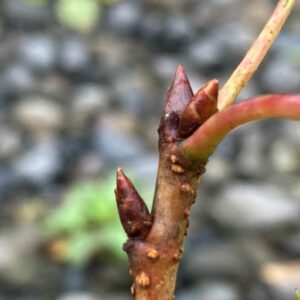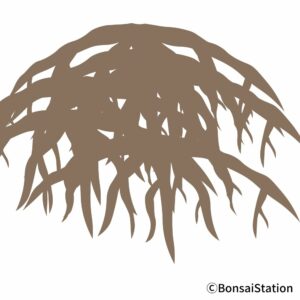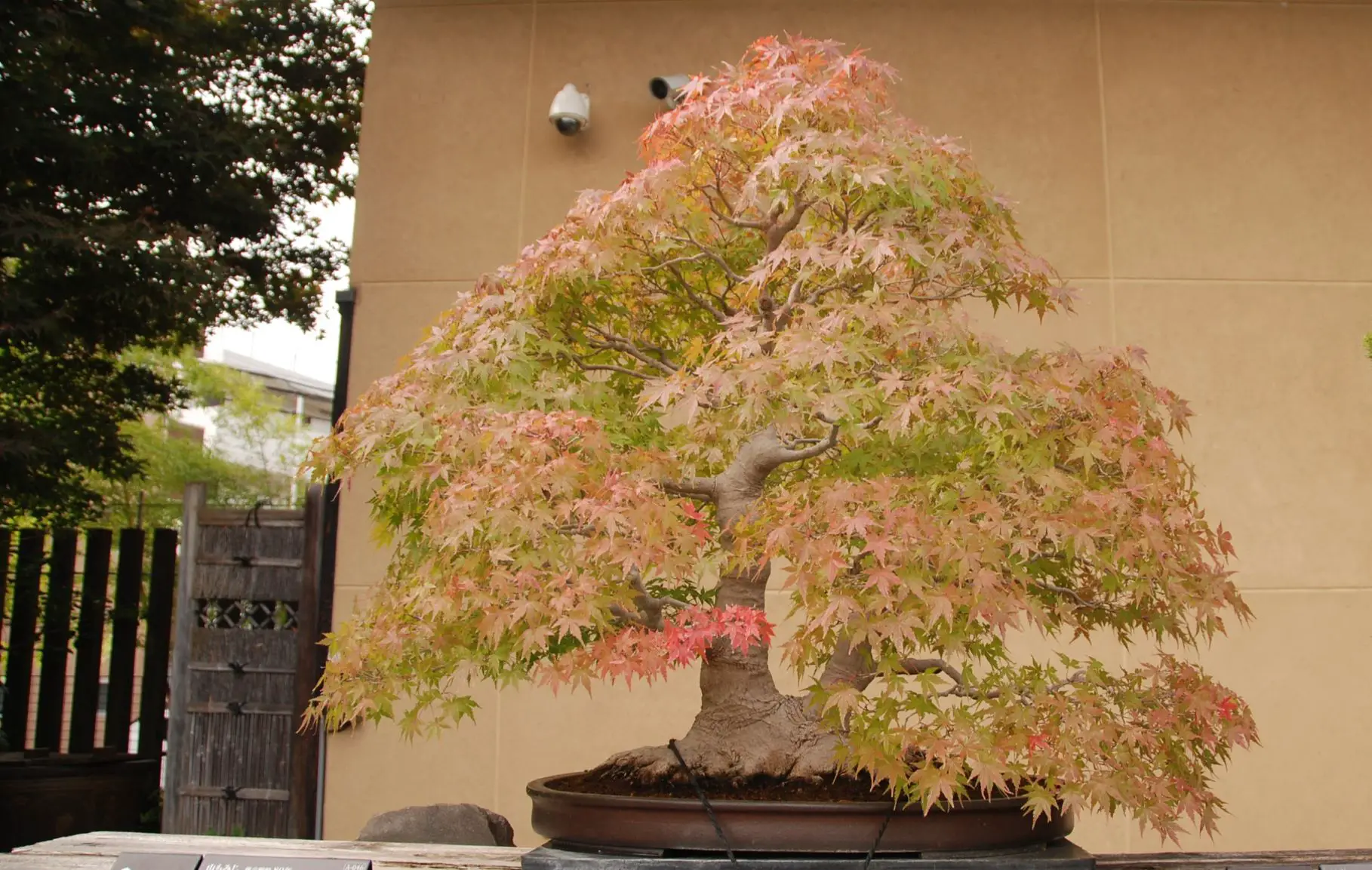Although Japanese maple trees in nature are quite cold hardy and can tolerate US hardiness zones from 6 to 8, Japanese maple bonsai trees are good to be outside in winter only in zone 8.
Cold hardiness and bonsai trees
Frost stress sometimes severely affects bonsai trees to the extent that it kills them. To help minimize winter damage, we must first understand how they acquire cold hardiness.
How bonsai trees fight against freezing stress

Most plants that are considered cold-hardy have the ability to avoid ice crystals from forming within or between cells. Plants, including bonsai trees, developed two contrasting strategies to cope with freezing stress: tolerate it or avoid it.
Freezing tolerance allows plants and/or their tissues to tolerate the presence of ice in extracellular spaces and the ensuing dehydration stress. Freeze avoidance relies on the ability of plants to avert the formation of ice crystals in the cells.
These strategies are not mutually exclusive and bonsai trees can adopt both of them at the same time.
How bonsai trees acquire cold hardiness

Bonsai trees’ cold hardiness is a combined function of genetic capability and environmental conditions. Generally, bonsai that have evolved in cold climates are more resistant to cold.
Genetics determines their ability to fight against cold but they are not cold-hardy year-round and they do not become cold-hardy all of a sudden. In fact, bonsai trees have to slowly acclimate to lowering temperatures throughout fall to be ready for winter. They then develop hardiness in small, daily increments.
So, you should allow your bonsai trees to be exposed to cold temperatures during fall before they are protected from the cold.
Cold hardiness is not uniform
Cold hardiness depends
Bonsai trees are not affected by cold in the same way. In fact, frost hardiness is organ, variety, and age-dependent.
Aboveground structures

Cold hardiness is defined as the lowest lethal temperature “plants” can survive. But different plant structures, such as stems or buds, have different hardiness levels. In general, buds are less hardy than stems. This is why sometimes Japanese maple buds are hurt by frost during the winter and not the stems.
Roots

And when we talk about cold hardiness, we tend to focus on the aboveground parts and not the roots in most cases. It is important to differentiate these two because roots and aboveground tissues have different physiologies and stress response mechanisms to cold.
In woody species like bonsai trees, aboveground organs are much hardier than roots. So, when we say fully-grown Japanese maple trees tolerate coldness of up to around 15°F (-10°C), their roots may not. And the cold hardiness of the aboveground does not have an influence on root hardiness.
This means that you cannot consider the cold hardiness of trees growing from the ground and bonsai trees in a pot the same, even if both are the same species.
Trees growing from the ground vs. bonsai trees
When the trees are growing from the ground, the soil surrounding the roots acts as insulation, keeping the temperature at around the same level all year round. Normally, you only have to think about the cold hardiness of the aboveground portion for the ground-growing trees.
The roots of bonsai trees, on the other hand, have very little amount of soil to prevent them from cold. The roots are elevated above the ground in pots and thus are subjected to cold temperatures.
Roots’ cold hardiness depends on root types as well. Fine roots are generally less hardy than older, woody roots. If you repot your Japanese maple bonsai trees at ideal intervals, most of the roots should be thinner, fine roots.
So, bonsai tree roots, and subsequently the whole tree, are more susceptible to cold injury than trees growing from the ground.
Timing to acquire cold hardiness
Bonsai trees do not acquire it at the same rate as well. For Japanese maples, areas where branches join the trunk develop cold tolerance at a slower rate.
Age of the trees
Adult trees are hardier than younger trees and seedlings.
How cold hardy are Japanese maple bonsai trees?
Cold hardiness: Japanese maple growing in nature
Japanese maples are indigenous to Japan, Korea and China in the temperate climate zones. There are in fact two Japanese maple species: Acer palmatum and Acer amoenum, which have different cold tolerance levels.
In nature, Acer palmatum’s northernmost point of distribution is Fukushima and Acer amoenum’s is Hokkaido. The average minimum temperatures in those regions are as follows.
Average minimum temperatures in Fukushima and Hokkaido during 1991-2020
| Fukushima (Acer palmatum) |
Hokkaido (Acer amoenum) |
|
| December | 33°F (0.7°C) | 19°F (-7.0°C) |
| January | 29°F (-1.5°C) | 14°F (-9.8°C) |
| February | 30°F (-1.2°C) | 15°F (-9.4°C) |
So, in their natural state, i.e. growing from the ground, Acer palmatum can tolerate cold temperatures of just below freezing 29°F (-1.5°C) and Acer amoenum around 14°F (-10°C).
With protection and depending on cultivars, Japanese maples are good to grow in US hardiness zones from 6 to 8 (and maybe 5B).
Cold hardiness: Japanese maple bonsai
Japanese maple bonsai trees, on the other hand, are another story.
As I said earlier, they are more susceptible to cold injury than trees growing from the ground. Their buds as well as the tips of fine branches easily get cold burns. Their roots are more exposed to frost-induced dehydration damage than aboveground organs, especially because bonsai trees are placed in pots.
Also, cold hardiness often does not account for the dry winds and particular patterns of regional weather changes.
So, we should assume Japanese maple bonsai trees do not endure winter in zones 7 and 6 (and below) without some kind of protection and are good to be outside in winter in zone 8.
But wherever you are, you have to be absolutely careful not to let the moisture in the pot freeze during the night (or day). Branches and buds may tolerate quite low temperatures but not the roots. When the water in the roots freezes, the roots may be damaged by frost-induced dehydration.
If you are interested in overwintering your bonsai trees, the following post might be helpful.
—–
Reference
Ambroise, Valentin et al. “The Roots of Plant Frost Hardiness and Tolerance.” Plant & cell physiology vol. 61,1 (2020): 3-20. doi:10.1093/pcp/pcz196





